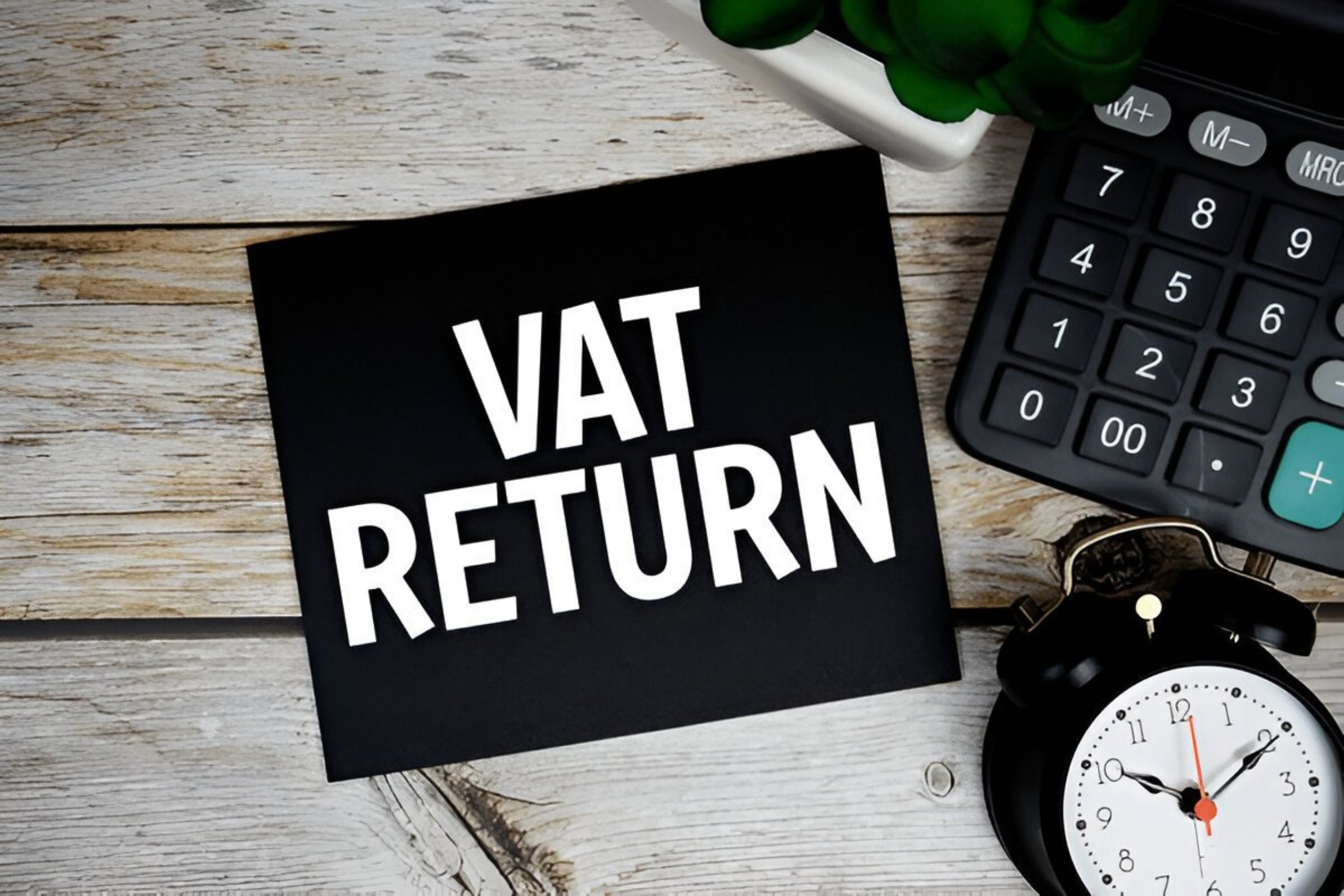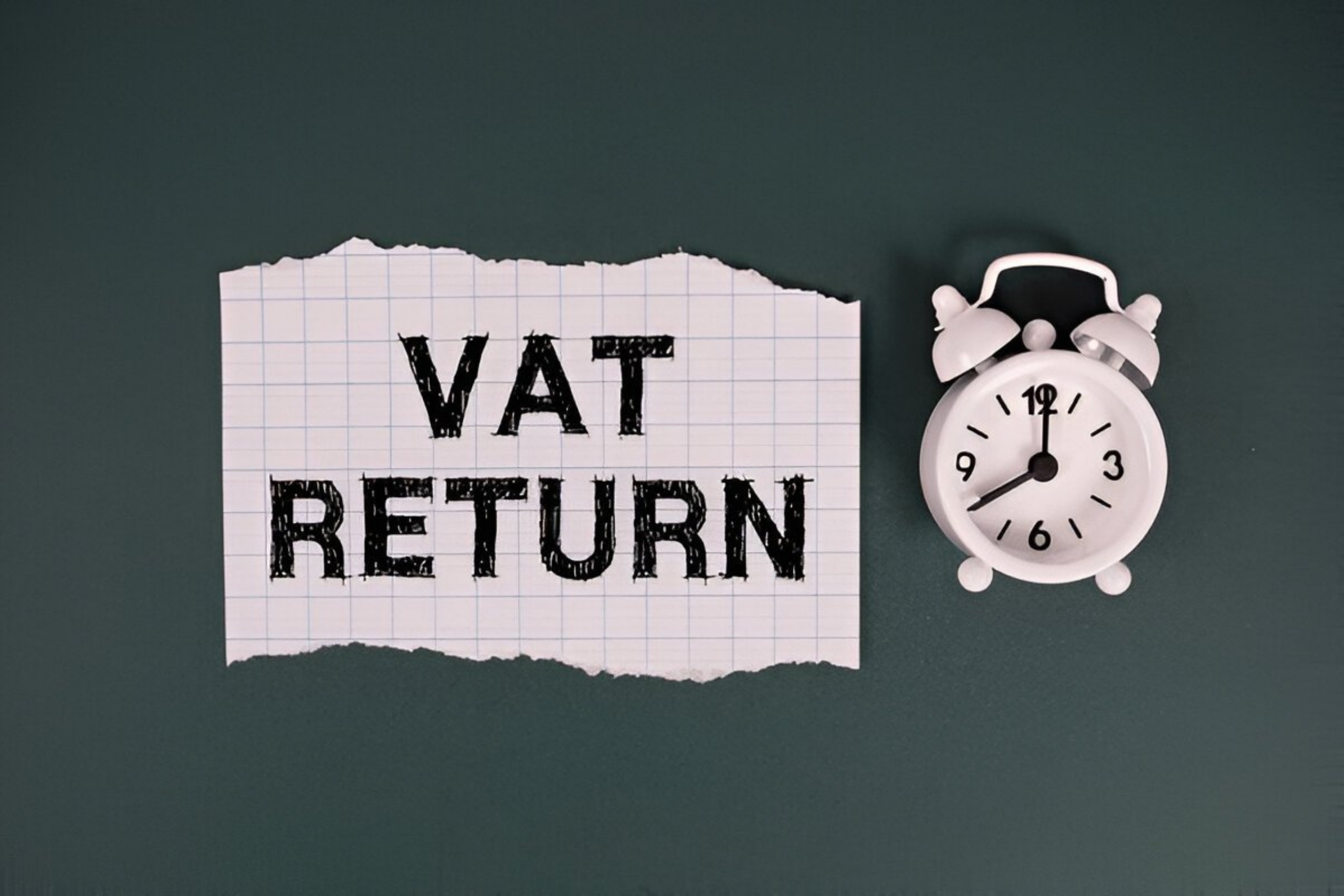VAT Return filing in the UAE:
A business entity finalized with VAT registration in the UAE should submit VAT returns to the Federal Tax Authority (FTA) by the end of every tax period. This is a binding condition on any VAT-registered entity, irrespective of the type and magnitude of the sales, purchases, and tax issues.
We focus on offering a one-stop solution and professional advice to make your filing of VAT returns easy, precise and in full accordance with the tax laws in the United Arab Emirates. Our customized services are available to both small start-ups and big corporations alike in order to satisfy their unique needs in VAT.

→Value Added Tax (VAT) is a duty implemented on goods and services sold or produced at every stage of production or sale. In the UAE, companies earning above a given threshold within a year are required to register under VAT. It implies that they are forced to collect VAT and send it to the government. VAT registration assists the UAE government in raising taxes and guides businesses by the rules.
→ A tax return is a formal document that summarises all the sales and purchases that the taxpayer has made in a given tax period. It has a summary of the importation and exportation, the exempt supplies, and the VAT (Value Added Tax) paid or collected on every movement. In the UAE, this document is mandatory to use for tax purposes, and it should be prepared carefully, depending on the invoices issued within the tax period. This tax return must be filed once ready in the official portal of the Federal Tax Authority (FTA).
→Preparation and filing of a VAT return at frequent intervals are mandatory for all taxpayers registered for VAT in the UAE.
→ As stated earlier, all taxpayers in the UAE that are registered to pay VAT are required to create and file a VAT return periodically. These periods are referred to as tax periods and are normally determined as monthly or quarterly (after every three months) based on the guidelines as defined by the FTA on the taxpayer’s VAT registration certificate.
→This is one of the VAT Return Filing processes that is very important in VAT compliance in the UAE, as it ensures that the taxpayers report the tax liability and credits owed to them correctly, depending on the transactions they do. VAT returns and related payment of taxes are supposed to be done within 28 days of the period in question.

VAT Return Filing is required to be filed regularly, and this is decided on by the tax period that one of the businesses is under. Tax periods are of the following standard lengths:
→ Quarterly Filing: Applicants to this are businesses that have a turnover lower than AED 150 million in a year. Such businesses are required to submit their returns on VAT returns every three months.
→ Monthly Filing: Those businesses whose annual turnover is AED 150 million or above are required to file VAT returns monthly.
VAT returns on a monthly or quarterly basis should be submitted within a constantly predetermined period of time, which is the 28th day at the end of the month in which the period covered in the VAT returns took place.
Also, the FTA has the prerogative to determine different tax periods on the various types of business depending on a set of criteria or conditions. These are filing deadlines that companies should follow because non-compliance with these deadlines may lead to penalties due to the absence of filing VAT returns, and the required deadlines are 28 days after the end of the tax period.
Businesses registered under the VAT pay taxes electronically by making use of the FTA portal. It is important to note that all the requirements of tax returns must be satisfied before handing over the VAT return form on this portal.
→VAT 201 Return Form:
→VAT Return in the UAE is filed on VAT 201, which is the necessary document that the taxpayers have to fill in to complete the filing process. This type is further subdivided into seven major sections, which need particular information:
→TGO: Taxable Person Details: Data concerning the taxpayer or the business.
→VAT Return Period: The return period for which the return is being submitted.
→VAT on Sales and All Other Outputs: It contains the information about VAT collected on sales and other output taxable items.
→VAT on Expenses and All Other inputs: This contains data on VAT paid on business expenses and other inputs.
→Net VAT Due: Compute the net VAT which the taxpayer is liable to pay or reclaim.
→Additional Reporting Requirements: Any other information that is obligatory to be given by the FTA.
→Declaration and Authorised Signatory: Formal declaration and signing by the individual who will be filing the return.
All sections are filled with boxes in which specifics should be filled to ensure the filling of a VAT return is accurate. It is important that taxpayers carefully complete every section of the form so that they are in line with the UAE VAT requirements.
VAT liability, as per the UAE taxation, is the amount that arises by deduction of the input tax (VAT paid on purchases) from the output tax payable (VAT paid on the supply of goods and services) in a particular tax period.
In cases where the output tax incurred in a given period exceeds the input tax, the difference has to be paid to the Federal Tax Authority (FTA). On the other hand, when the input tax is more than the output tax, then the person to pay the tax is left with a surplus contribution of input tax. This surplus may be used to cancel future payments of the VAT due to the FTA, which will offer the business tax relief and ensure balanced financial liability.
We have a team of professional experts who can help you fill out your VAT return in an efficient and appropriate manner. Our experts are informed about VAT rules and are able to support you throughout every process. We provide services for the Preparation of the documentation needed to file your return with us before filing your return in the FTA portal, and your VAT filing meets all the legal and regulatory requirements, preventing possible mistakes or fines.
Here are some common questions about VAT Return Filing
All registered VAT businesses in UAE have to make VAT returns, and this includes those businesses with annual turnover over AED 375,000 (compulsory), and those with annual turnover over AED 187,500 to AED 375,000 (voluntary registration).
A majority of the businesses submit VAT returns after every three months.Businesses that have an annual turnover of more than AED 150 million are required to submit monthly VAT returns.The deadline is 28 days after the end of the tax period.
The portal of VAT returns is the EMARATAX, where businesses complete the VAT 201 form by providing the summary information on the sales, purchases, expenses, output and input VAT, and so on.
All supply Information: taxable (standard 5 percent), zero-rated, exempt supply, and reverse charge supply.Outputs: VAT charged on sales.Input: VAT charged on purchases, which may be offset by output VAT.Supply data statewide at the emirate level.Imports under the reverse charge.
In case the balance between the Output VAT and the Input VAT is higher, the balance is to be paid to FTA. In case the amount of Input VAT is higher than the Output VAT, either a refund or a carry forward is possible.
WhatsApp us
Social Profiles